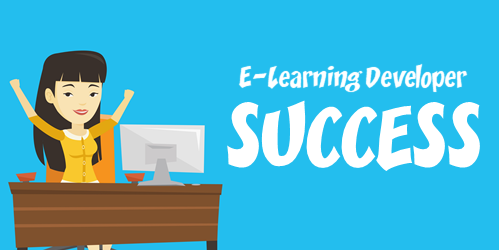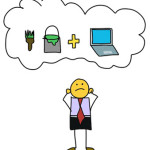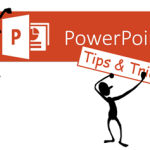
Successful e-learning is measured in many ways. It’s important to provide measurable value. However, a large part of success revolves around how others view your contributions. Thus it’s important to manage how you work with customers and how they understand your contributions.
If you’re just getting started, here are some things to keep in mind:
Successful E-Learning Pleases the Customer
Your customer is why you have a job. Thus it’s important to ensure the customer’s needs are met.
Who is your customer? The obvious answer is the one who commissions the e-learning course. However, there’s also the dynamic between you and your manager (who may not be the customer) but is the person who influences your employment.
How to Please the Customer
There are many things you can do, but here are a few basics:
- Establish clear expectations. Write them down and get affirmation. This way everyone is on the same page. I create a Service Level Agreement that documents the project details and expectations.
- Find ways to make your customers look good. Often I’ll send encouraging emails and CC their managers. I try to deflect credit from myself and pass it to others. Give them the credit when possible.
- Control your costs and resources. Everyone’s on a budget and has limited time.
- Finish ahead of schedule. I try to pad extra time into the production, get agreement on the production schedule, and then work to be done early. Sometimes it doesn’t matter if you’re early because they may not be prepared for it, but it builds your reputation and how they perceive you.
- Take care of details before they become issues. Be proactive and do this before the customer is aware. The more projects you do, the more you’re able to anticipate potential issues. I always make a list of things that may derail the process so that I can think through a work around before it happens.
Successful E-Learning Knows that the Business is the Business
Ultimately you’re hired to help meet specific organizational goals. Sometimes we lose sight of that. It’s easy to get stuck in the way things have always been done or on our own pet projects. Keep your focus on what the organization says is important and the metrics they use.
When working with customers, try to steer them towards measurable results and not just content. From there you set clear objectives that are tied to a metric which helps measure the course’s efficacy. If the client has no metrics (sometimes that happens with compliance training) measure cost and production time as well as a reduction in training time.
How to Report the Results of Successful E-Learning
It’s important to show the results of your work. The challenge is knowing what to report, getting the numbers, and how to report them. Here are a few thoughts:
- Performance results. Create courses with measurable objectives. That gives you something to measure. How does the client know that they need training? What metrics are they using? Use the same process. Connect with the team that collects and curates results. Often training is a small part of the process thus you may not see significant results from training alone.
- Measure before and after performance. Create a means to pre-assess the learners and then compare how they did after the training. You may not directly impact real-world performance but you can state that before the training they were at X and after they were at Y.
- Measure what was saved. Some training is not performance-based. Thus it’s a challenge to report performance metrics. In those cases, track how much training costs before and how the e-learning courses saved time by reducing travel costs, etc. Another benefit is the flexibility training offers because it is time-shifted. Worst case, compare your production costs to that of an outside vendor.
Building engaging and relevant e-learning is the main measure of success. That happens in the context of supporting a customer and your organization. Develop some strategies to manage those relationships and the expectations. Help them focus on real results and do a good job reporting your success. And their success will be your success.
Events
Free E-Learning Resources
















0
comments